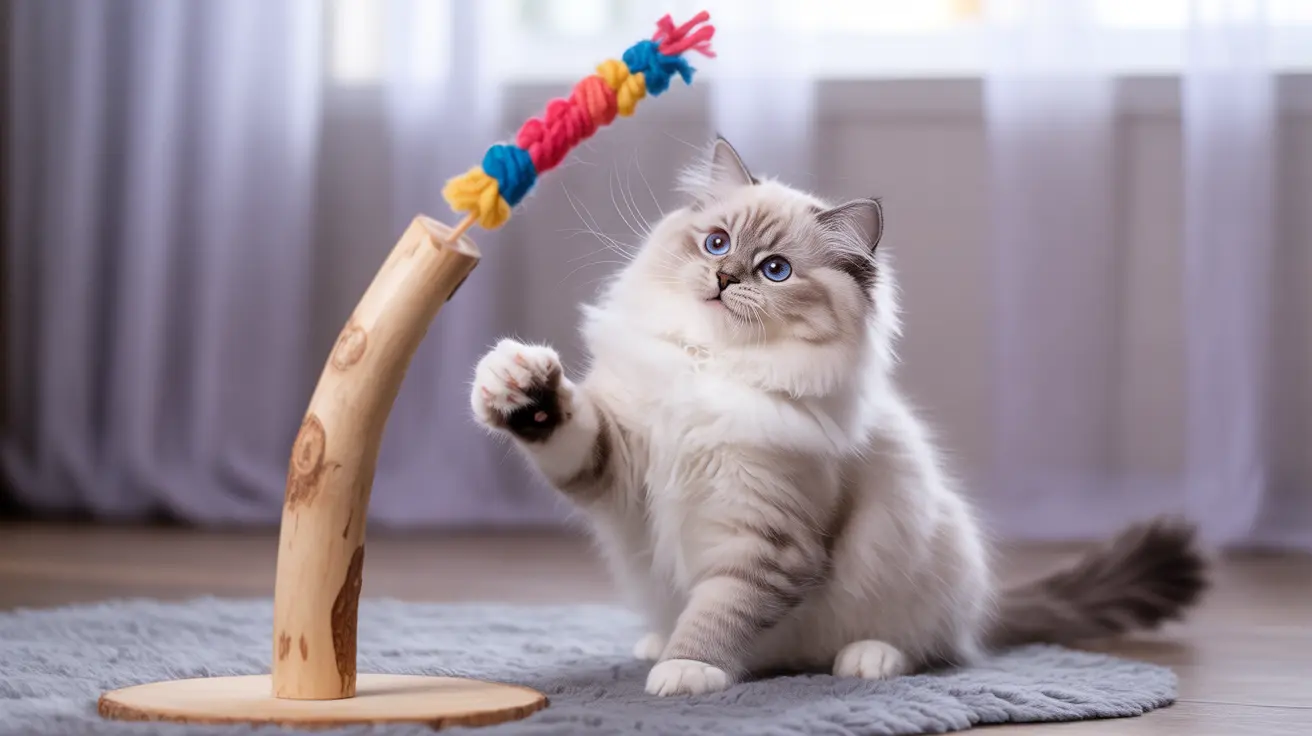Choosing the Right Materials for Safe Cat Toys
The foundation of any safe DIY cat toy starts with selecting appropriate materials. Natural fibers like cotton yarn are typically the safest choice, as they're less likely to cause harm if small amounts are ingested. Avoid synthetic yarns, especially those with glitter or metallic threads, as these can be dangerous if swallowed.
- 100% cotton yarn
- Thick, sturdy varieties that won't easily unravel
- Yarns without loose fibers or shedding
- Natural, undyed options when possible
Essential Safety Guidelines for Yarn Toys
Safety should never be compromised when creating cat toys. Always ensure that toys are:
- Larger than your cat's mouth to prevent swallowing
- Constructed with tight, secure stitches
- Free from loose ends or dangling pieces
- Regularly inspected for wear and tear
Remember that supervision is crucial during playtime with any yarn-based toy, regardless of how well it's made.
Creative DIY Yarn Toy Projects
Simple Yarn Ball with Catnip
Start with a basic yet effective toy by creating a tightly wound yarn ball. Incorporate a small amount of catnip in the center as you wind the yarn, securing it thoroughly to prevent unraveling. This classic design provides hours of entertainment while maintaining safety.
Braided Yarn Wand
Create an interactive toy by braiding three strands of yarn tightly together, then attaching them securely to a wooden dowel or stick. This design allows for supervised play while keeping the yarn under control.
Maintenance and Regular Safety Checks
Even well-made toys require regular inspection and maintenance. Check toys before each play session for:
- Signs of fraying or unraveling
- Loose pieces or exposed stuffing
- Wear at attachment points
- Any changes in shape or structure
Replace toys at the first sign of deterioration to prevent potential hazards.
Frequently Asked Questions
How can I safely make DIY cat toys using yarn without risking my cat ingesting loose fibers?
Use tight stitches and secure construction methods, ensuring all ends are properly woven in and knotted. Choose sturdy yarn that doesn't shed, and always supervise play sessions.
What types of yarn are best for creating durable and non-toxic cat toys?
100% cotton yarn is typically the safest and most durable option. Avoid synthetic fibers, yarns with glitter or metallic threads, and those that shed easily.
How do I properly construct yarn-based cat toys to prevent unraveling and choking hazards?
Use tight stitches, double-knot all connections, and weave in ends securely. Make toys larger than your cat's mouth and regularly check for signs of wear.
Can I add catnip or silvervine to yarn toys, and how do I do this safely?
Yes, you can add catnip or silvervine by incorporating it into the center of the toy during construction. Ensure it's completely enclosed and use only a small amount to prevent overstimulation.
What are the signs that a yarn toy is unsafe or worn out and should be discarded?
Discard toys that show signs of fraying, unraveling, exposed stuffing, or loose pieces. Also replace toys if they become stretched out or misshapen, as this can indicate structural weakness.
Conclusion
DIY cat toys with yarn can provide endless entertainment for your feline friend when created and used responsibly. By following proper safety guidelines, choosing appropriate materials, and maintaining regular toy inspections, you can craft engaging playthings that enrich your cat's life while keeping them safe.
Remember that no toy is completely indestructible, and supervision is always key to ensuring your cat's safety during playtime. With these guidelines in mind, you can enjoy the creative process of making custom toys that your cat will love.






